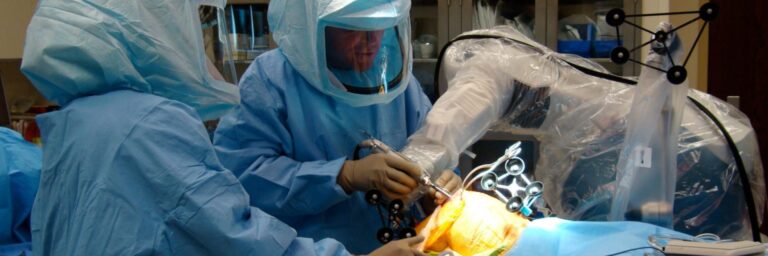Your knee is put through a good amount of work every day. Even when you are simply standing, there is a considerable amount of pressure on the knee. If there exists a slight problem with the knee, it affects your overall leg mobility.
In many older people and even some younger ones, forms of arthritis or knee injuries are common. While some of them can be treated with medication, physiotherapy and more, severe cases like osteoarthritis require surgery. With technological advancements in the field of medicine, a more accurate and efficient form of knee surgery has brought us to robotic knee replacement surgery.
What Is Robotic Knee Replacement Surgery?
Conventional knee replacement surgeries were conducted fully by doctors. Though robotic knee replacement surgeries are not conducted by robots, a robotic arm assists the doctor in performing the surgery.
The process is the same as traditional surgery. The surgeon removed the damaged tissues after which they were replaced with an artificial joint. This process requires precision which is better acquired with the assistance of a robotic arm.
Navio Surgical System
Robotic knee replacement surgeries across the world are done using different robotic tools. At Specialist Hospital, we use NAVIO, a globally recognised robotic medical equipment that is known for its accuracy and effectiveness.
When using the Navio surgical system, measurements of your knee, hip and ankle are taken. To create an accurate 3D model of your knee, you will have to perform a range of movements that determine how your joints move. Using this image, the doctor decides the surgical plan and the placement of the implant.
Along with the surgeon’s experience and expertise, assistance from a robotic arm helps increase the efficiency and success rates.
Benefits Of Robotic Knee Replacement Surgery
- More precision and enhanced planning: Knee replacement surgeries require steady hands and accurate mapping. 3D mapping and using the assistance of a robot ensures more precision than traditional surgeries.
- Lesser risk of complications: With higher precision comes lesser complications. Accuracy in surgery decreases the chance of future complications.
- Faster recovery time: Robot-assisted surgeries disturb fewer healthy tissues, which means the needed recovery time is potentially less. When the average knee replacement surgeries take 4-6 weeks for full recovery, robotic surgery may aid in a faster recovery.
- Fewer hospital visits: In traditional knee replacement surgeries, the patient often has to visit the hospital to further check-ups and complications. With robotic surgery, you can reduce the cost of such visits.
- Smaller cuts: 3D surgical mapping helps the surgeon make only the necessary accurate cuts. This could potentially reduce blood loss as well.
When compared to traditional knee replacement surgeries, the technologically advanced robotic knee replacement surgery is proving to show better results. Specialist Hospital is the first hospital to introduce robotic knee surgeries in Bangalore and have since become experts in the same. The highly skilled and experienced doctors headed by Dr Prashant have performed 1000+ successful robotic surgeries. Cure your knee ailments with the experts at Specialist.



